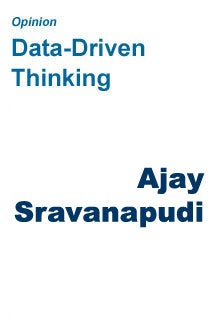 “Data-Driven Thinking” is a column written by members of the media community and containing fresh ideas on the digital revolution in media.
“Data-Driven Thinking” is a column written by members of the media community and containing fresh ideas on the digital revolution in media.
Today’s column is written by Ajay Sravanapudi, CEO at LucidMedia.
Since I run a venture-backed company, I spend more time with venture capitalists than any sane person should. Of late, one topic keeps coming up in our conversations when we discuss demand-side platforms (DSP). In fact, there is a set of inter-related questions. Let me throw them out there:
- Isn’t a DSP just a “feature” on an exchange?
- Should Google buy a DSP?
I’ll let someone from Google (current or former) answer the second question. The first question is much more interesting and one can make both cases depending on their motivation.
It is a Molehill
Yes, a DSP is really just a feature on an exchange. Here is the reasoning:
- The exchange provides massive scale of impressions and data.
- A DSP simply uses the real-time bid (RTB) application programming interface (API) of an exchange to buy media and run campaigns more effectively.
- The exchange has an ad server that can deliver campaign pacing, frequency capping, targeting, etc.
- All that is missing is some intelligence to “auto-magically” buy media on behalf of the campaign.
- Dozens of ad networks have done this for years on things like YieldManager on the RightMedia Exchange (RMX).
- If we can simply layer this “auto-magical” intelligence on the exchange then there is no need to pay for a DSP.
Using this logic, a DSP is merely a feature looking for a business model. Insert a smug VC smile here while he or she dismisses the entrepreneur pitching a newfangled DSP.
It is a Mountain
You can surely lather some intelligent buying onto an exchange and every exchange inevitably will do so to differentiate themselves from their competitors. But the previous analysis is based on many faulty assumptions. Let me list just a handful to start with:
- All the exchanges will interoperate seamlessly. Therefore, a seat on a single exchange will let you buy media from any of the others. Yeah, good luck with that.
- One can seamlessly blend premium placements with non-premium inventory on the exchange while fulfilling the full disclosure requirements of publishers. Sure, and pigs can fly.
- Universal frequency capping across all exchanges and publisher sources will be possible because data is fungible. If you believe that one then I’ve got a bridge in Brooklyn to sell you.
- Special technology like content and audience targeting will be similar enough on all sources to match up audiences. Right, and I’ll be the 45th President of the United States.
I could go on. Now insert a truly obnoxious VC smile here while he or she tells you why all the other VCs are just sheep.
Obviously I feel strongly that it is a mountain and not a molehill. It is far from some itty-bitty little thing. In fact, it is a huge thing. And, here are a few reasons why…
- The scale and reach of a DSP spans multiple exchanges and can therefore deliver unmatched efficiency
- Optimized contextual and demographic targeting—secret sauce of the differentiated DSP—provides a significant performance lift. But it is impossible to layer any secret sauce onto the exchanges’ ecosystem without overcoming major technology and business-related hurdles.
- Off-exchange DSPs are more nimble and can bring new capabilities to market far quicker.
- Off-exchange DSPs can respect the rights of premium publishers, while giving agency clients the control and efficiency they need.
What do you think?
Follow LucidMedia @lucidmediaVIP and AdExchanger.com (@adexchanger.com) on Twitter.












